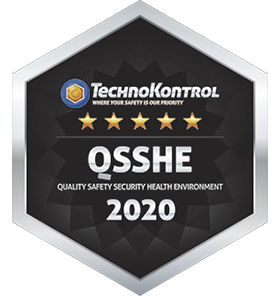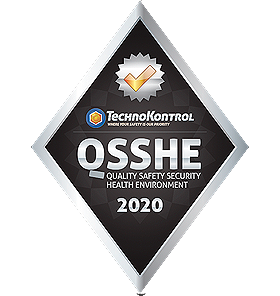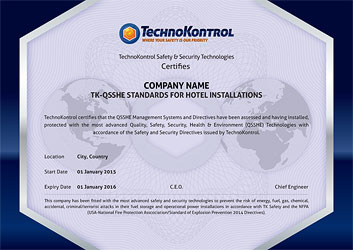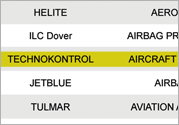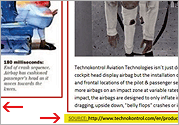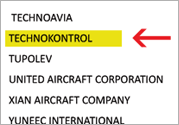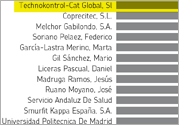TechnoKontrol - Where your safety is our priority
Skip navigation- How TechnoKontrol Works
- How TechnoKontrol Works
- Physical Characteristics
- Technical Characteristics
- Flammable & Combustible Liquids - Hazards
- What is B.L.E.V.E. Explosion?
- TK-Global Engineering
- TK-Global Electronics
- TK-Global Environment
- TK-Global Technotelecom
- TK-QSSHE Certification (SPA)
- TK-Financing
- TK-Emergengy Call Center
- Products
Safety Products System
- Safety Products Videos
- Anti Explosion Blast System
- Anti Explosion Alloy Products
- Anti Explosion Manhole Systems
- Anti Explosion Gas Cylinders
- Anti Explosion Fuel Cans
- Fire/Thermal/Bullet Proof Panels
- Bullet Proof Security Panels
- Fire Rated Doors
- Airport Fuel Security & Safety
- Panic Rooms/Bunkers
- Detector y Sistema de Evacuación de Gases
- Anti-Electronic Pulse EMPS/EMI Strategic National Industries
- Safe Haven Rescue/Fire/Safety/Humanitarian/Sea/River/Land/Aerial Mobile Bases
- Oil Tankers, Barges, Ports, Vessels Protection, Safety, Security & Efficiency Technologies
- Helipads / Heliports
- SAR-Search & Rescue Services
- Tecnologías de Seguridad Activa y Pasiva (Spa)
- Climate, Electrostatic, Oxidation Safety Properties
- Anti-Fire/Heat/Explosion Mobile Telecom Nanotechnologies
- Pipelines, Fracking & Pumping Stations Environmental Damage and Safety
- Emergency Life Pod Evacuation Station
- Arts Mobile Security Container Systems
- Anti-Blast Mobile Shields & Barriers
- Smart Delivery Box
- Bunding Safety Systems
Aviation Industry
- Aviation Industry Overview
- Eagle Eye Law Enforcement Program
- Alien Black Night Viper Aircraft
- Aircraft Airbag, Parachute, Anti-Thermal/Fire Safety Technologies
- Anti Explosion Aviation Fuel Tanks
- Viper Sting Ray - Visual Detection Technologies
- Airport Fuel Security & Safety
- Helipads / Heliports
- SAR-Search & Rescue Services
- Climate, Electrostatic, Oxidation Safety Properties
Petroleum Industry
- Petroleum Industry Overview
- Anti Explosion Petrol Station System
- Anti Explosion/Anti Fire Fuel Valve
- Válvula Anti Explosión/Anti Fuego (Spa)
- Anti Explosion Fuel Chemical Tanks
- Anti Explosion Pipelines Systems
- Anti Explosion Oil Rig Systems
- Anti Explosion Fuel Tank Floating Roof System
- Anti Explosion Strategic Fuel Tanks
- Anti Explosion Mobile Fuel Tanks
- Pipeline Acoustic Security Detection
- Anti-Explosion Safety Building Fuel Storage Tanks
- Depósitos de Combustible de Edificios Anti-explosivos (Spa)
- Airport Fuel Security & Safety
- Anti-Electronic Pulse EMPS/EMI Strategic National Industries
- Safe Haven Exploration/Drilling Sea/River/Land/Mobile Bases
- Oil Tankers, Barges, Ports, Vessels Protection, Safety, Security & Efficiency Technologies
- Helipads / Heliports
- SAR-Search & Rescue Services
- TK Meteor 6000 Recycling Plant
- Tecnologías de Seguridad en la Industria Petroquímica (Spa)
- Climate, Electrostatic, Oxidation Safety Properties
- Pipelines, Fracking & Pumping Stations Environmental Damage and Safety
- Anti-Blast Mobile Shields & Barriers
- Bunding Safety Systems
Environmental Industries
- TK-Global Environment
- The Eye of Osiris National Security Food Plant
- Environmental Mobile Decontamination & Recycling Technologies
- Anti Contamination Industrial CO2 Filter Systems
- Anti Heat/Fire Industrial Cooling Systems
- TK Solar Heating Systems
- TK Meteor 6000 Recycling Plant
- TK Meteor 4000 Recycling Plant (Eng)
- TK Meteor 4000 Planta de Reciclaje (Spa)
- Tecnologías de Prevención de Accidentes Medioambientales (Spa)
- Climate, Electrostatic, Oxidation Safety Properties
- Pipelines, Fracking & Pumping Stations Environmental Damage and Safety
- Bunding Safety Systems
Housing Projects
- TK-Global Technotelecom G2/G3/G4 Communication Technologies
- Military / Police / Security Buildings
- Edificios Militares / Seguridad / Policiales
- Emergency/Social Housing Projects (Eng)
- Viviendas de Emergencia y Sociales (Spa)
- Quick Build Housing (Eng)
- Viviendas de Construcción Rápida (Spa)
- Building Security & Safety
- Seguridad en Edificios
- Fire/Thermal/Bullet Proof Panels
- Bullet Proof Security Panels
- Fire Rated Doors
- Home/Office Panic Rooms/Bunkers
- Detector y Sistema de Evacuación de Gases
- Arts Mobile Security Container Systems
- Anti-Blast Mobile Shields & Barriers
- Smart Delivery Box
Industrial Projects
- TK-Global Environment
- The Eye of Osiris National Security Food Plant
- TK-GCMR Refinery (Eng)
- TK-GCMR Refinery (Spa)
- Rubber/Plastic/Oil Recycling Plant (Eng)
- Refinería de Goma/Plásticos/Aceites (Spa)
- Airport Fuel Security & Safety
- Environmental Mobile Decontamination & Recycling Technologies
- Climate, Electrostatic, Oxidation Safety Properties
- Anti-Fire/Heat/Explosion Mobile Telecom Nanotechnologies
- Bunding Safety Systems
Maritime Industry
- Maritime Industry Overview
- King Shark Vessels Porgram
- King Shark I Light Armoured Patrol Vessel
- King Shark II Heavy Armoured Patrol Vessel
- King Shark III Aircraft Carrier
- King Shark IV Submarine Carrier
- King Shark V Assault Troop Carrier
- King Shark VI Fuel Carrier
- King Shark VII Logistical Cargo Carrier
- King Shark VIII Plasma Fusion Gunship
- King Shark IX Missile Launcher
- King Shark X Emergency/Hospital
- King Shark XI Helicopter Carrier
- King Shark XII Fire Services Heliport
- King Shark XIII Fire Services Long Ladder
- King Shark XIII Fire Services Unmanned Ladder
- King Shark XIV Long Range Radar
- King Killer Whale / Heavy Aircraft Carrier
- Vessel Traffic Services (VTS)/Auto Identification Services (AIS)
- Maritime & Submarine Technologies (SPA)
- Viper Sting Ray - Visual Detection Technologies
- Oil Tankers, Barges, Ports, Vessels Protection, Safety, Security & Efficiency Technologies
- Helipads / Heliports
- SAR-Search & Rescue Services
Electronic Safety Systems
- TK-Global Electronics
- TK-Global Technotelecom G2/G3/G4 Communication Technologies
- Anti-Fire/Heat/Explosion Mobile Telecom Nanotechnologies
- Tecled-Technoleds LED Lights (Spa)
- Fibre Optics for Security & Safety
- Anti Electromagnetic Pulse System
- Acoustic Detection Technologies
- Vessel Traffic Services (VTS)/Auto Identification Services (AIS)-(RAIS)
- Sistema de Tráfico de Buques (VTS)/ Sistema de Identificación Automática (AIS)-(RAIS)
- Viper Sting Ray - Visual Detection Technologies
- Detector y Sistema de Evacuación de Gases
- Climate, Electrostatic, Oxidation Safety Properties
- Arts Mobile Security Container Systems
- Smart Delivery Box
Eco Energy Plants
- TK-Global Environment
- TK Meteor 6000 Recycling Plant
- TK Omega RF5000 Electromagnetic (Spa)
- TK Orion RF5000 Electromagnetic (Spa)
- TK Meteor 4000 Recycling Plant
- TK Meteor 4000 Planta de Reciclaje
- Environmental Mobile Decontamination & Recycling Technologies
- Climate, Electrostatic, Oxidation Safety Properties
Construction Industry
- Construction Industry Overview
- Anti Fire/Heat Wall Panels
- Anti Fire/Heat Panels
- Anti Fire/Heat Duct System
- Anti Fire/Heat Collar System
- Anti Electromagnetic Pulse System
- Anti-Explosion Safety Building Fuel Storage Tanks
- Depósitos de Combustible de Edificios Anti-explosivos (Spa)
- Fire/Thermal/Bullet Proof Panels
- Bullet Proof Security Panels
- Fire Rated Doors
- Home/Office Panic Rooms/Bunkers
- Detector y Sistema de Evacuación de Gases
- Emergency Life Pod Evacuation Station
- Anti-Blast Mobile Shields & Barriers
- Bunding Safety Systems
- Current Projects
- Current Projects
Research & Development
- Research & Development
- Anti Heat/Fire Cooling Towers
- Anti Fire/Heat Safety Clothing Products
- TK Solar Heating Systems
- Anti Contamination Industrial CO2 Filter Systems
- Anti Electro Magnetic Pulse Technology
- Alien Black Night Viper Aircraft (Eng)
- Alien Black Night Viper Aircraft (Spa)
- TK-Global Engineering
- TK-Global Electronics
- TK-Global Environment
- TK-Emergengy Call Center
- Anti-Fire/Heat/Explosion Mobile Telecom Nanotechnologies
- The Eye of Osiris National Security Food Plant
- Eye of Osiris
- Ojo de Osiris
- Ojo de Pachamama
- TK Refinery (Spa)
- TK Refinery (Eng)
- RF5000 Magnetic Generator (Spa)
- TK Emergency-Social Housing (Eng)
- TK Viviendas de Emergencia y Sociales (Spa)
Newsletter
News Update
TK Newsletter
TK-QSSHE / TK-Quality Security Health & Environment. Hotel Industry Compliance Certificate.
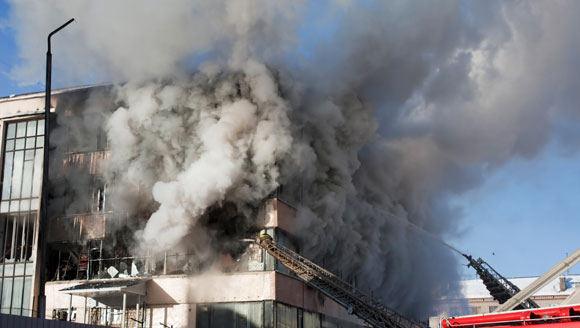
IN THIS ISSUE
2016
Technokontrol has presented the new 2016 certificate, seal and logos for the TK-QSSHE HOTELS/COMMERCIAL certificate, especially designed for the hotel, leisure, entertainment and commercial industries.
TK-Quality Security Health & Environment / Hotel Industry Compliance Certificate.
Click on images to enlarge
Due to the increase of the terrorist risk in soft locations as hotels, shopping malls, restaurants, airports, seaports, Technokontrol has reached an agreement with the top European Tour Operators, Government authorities, insurers and hotel groups to begin the issuance of the new TK-QSSHE certification directive in which the incorporated establishments have or are in the process of protecting their operational assets including fuel storage, power plants with the recommended safety and security technologies to guarantee the maximum levels of protection for their guests, clients, employees and corporate assets.

The risk of a terrorist attack, sabotage, suicide bombings increasing by the day and always wishing in being prepared for the worst case scenarios, these main tour operators,hotel groups, government authorities, insurers protecting their visitors,clients, employees, assets and commercial contracts with the most advanced, long term and environmental friendly safety technologies presented by Technokontrol exclusively.
The terrorist risk levels ever increasing due to the simple physical accessibility, low levels of fixed security protection standards, fabrication simplicity of homemade explosive devices,(I.E.D) which can be made with gas cylinders, petrol bombs and easily planted, activated, ignited in any hotel, shopping mall, airport fuel storage installations, which are all 100% refueled by fuel, gas, LNG, truck tankers.
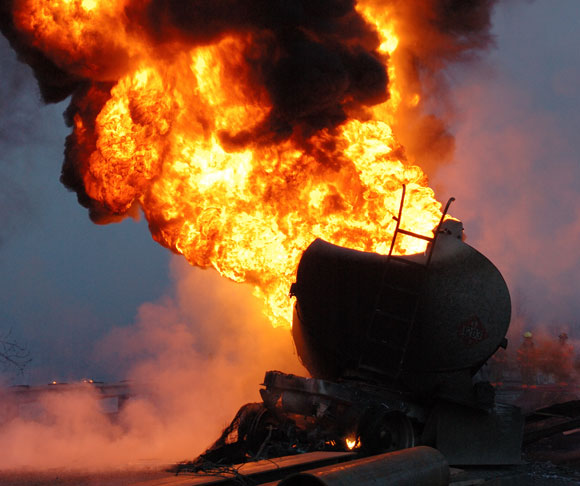
Any truck fuel tanker, commercial fuel gas tank, fuel deposit with a normal capacity of 30,000 liters of fuels, LNG, heating gas, having in the event of an ignition, spark, armed attack, bullet shot, accident, a thermal, blast, fire, explosive and destruction range/power of a 200,000 TNT explosive and even the simple 30kg home gas cylinder having over 200 kilos of TNT blast.
As these storage installations, deposits, fuel tanks being mostly in open air locations and next to the hotels, shopping malls, public locations the need of anti-explosive protection being paramount and using Technokontrol Safety Technologies allowing the full deactivation, null ignition or even non-explosion of these storage facilities regardless of the amount, type of the stored fuels, thus rendering any accidental or intentional incident null and fully protecting the guests, employees and establishment against the type of incident.
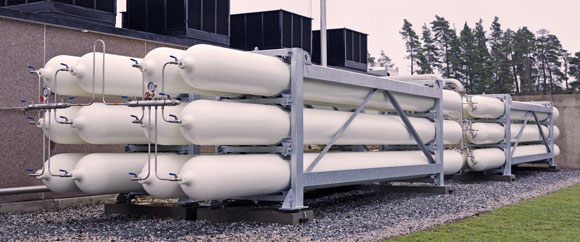
The issuance and the certification will only be issued with full Technokontrol technical compliance and following top global USA & EU Safety, security and protection directives as set out by the USA-NFPA (National Fire Protection Association Codes 2008/2014 for the Prevention of Explosion Acts). All installations, services, maintenance programs and products being fully insured by AXA Group.
Click on image to enlarge


Read previous newsletters
Cleaner, natural gas engines for ships needing Technokontrol Safety Technologies in cancelling risk in vessel fuel gas tanks and LNG explosions, fires, sloshing and vaporization.

Technokontrol has developed a practicable natural-gas fuelling storage anti-explosion, anti ignition, anti sloshing system for current diesel-powered ship engines. This new advanced breakthrough is good for the environment and people – while helping the shipping market meet more stringent EU rules on sulphur emissions.
Researchers in Technokontrol R&D have developed over the past year a new IX Generation unique, patented fuel tank safety anti-explosion 3D alloy technology which enables the use of new, modern motor injection systems and other related technologies for using liquid natural gas (LNG) to fuel large two-stroke ship engines at the highest of HSE, SSHE, safety levels being protected against not only possible operational, climatic incidents but also terrorist and criminal attacks of the vessel globally.
The increase of gas powered shipping vessels being of great importance for the environment and also for the financials of any global operator as being the shipping market as "cut throat" as the aviation industry where every cent counts especially when it comes down to savings, efficiency, longer durability and operational expenses against investment/ROR.

However, all of these global manufactures having the same basic issue and need and this being "safety", this is one word which cannot be forgotten as they all depend on the above mentioned operational points but without the most important point "safety" their technologies are of less value as all of these shipping contracts are agreed , approved by corporations with the highest levels and standards for corporate "Good Governance and Corporate Responsibility". Thus not being able to avoid, downplaying the principal issue of SSHE,HSE, QSSHE, environment protection and now being even more important "safety-security directives", due to the increase of possible terrorist risks as mentioned in the House of Parliament Piracy Report and in the Homeland Security Reports and Guidelines-API.
The use of Technokontrol Safety Alloys and technologies now not being only an option but should be mandatory as the only viable , adaptable, and long lasting safety technologies combining long term investment, efficiency and safety but also rewarding the designers, fabricators, clients other additional operational benefits as the total cancellation of oxidation, corrosion in newly protected storage tanks, the non-growth of algae’s in all types of fuels, reduction in fuel vaporization(environmental contamination) and anti-electrostatic properties which are the cause of nearly 50% of all fuel tank storage explosions, fires, incidents at global level regardless of having electrical-lightning safety systems which are obvious don´t work too well due to their past safety records.

No global corporation, national company, supplier, petrol chemical producer, logistical global operator, engineer, can ignore that if a 30kg home use gas cylinder has an explosion radius and destruction of a 200KG TNT explosive device what would be the outcome of an explosion in any global storage facility, port terminus, with hundreds of millions of liters of fuels, gases, chemicals surrounded by hundreds or even thousands of civilians, employees, homes, businesses?
As recently stated in the press in Malta where a new LNG jetty, terminus is being designed the level of destruction, damage of an accident would be comparable to 50 atomic bombs, regardless of the possible discussion if the destruction would be of 50 or 1 atomic bomb, we all agree that the destruction at atomic level would be massive. Strategic & infrastructure protection studies in Spain also stating the high risk of destruction at the main ports of Tarragona, Barcelona, Galicia, Cartagena which would also reach thousands or even hundreds of thousands of deaths, injuries, millions of Euros in losses in the event of a terrorist attack, accidental incident, climatic disasters.

One thing is not having the technology to avoid these safety, high risk issues and another is ignoring them thus as the law well states, "not knowing the law doesn’t mean you are exempted from it", even though just at moral, ethical, human, or simple common sense all safety measures and technologies should always be implemented as one should only wish the same for oneself as for others and not waiting in becoming part of an avoidable incident with the knowing that a solution existed but was ignored. Without forgetting the legal, criminal and punitive damages which just during 2015 in the USA have been in the billions of USD, thus why not investing and protecting now than destroying and paying in the future?
That is why all new environmental, efficiency, cost cutting technologies also must be integrated in the best safety and security technologies available if we wish to strive forward for better and safer world. Thus being Technokontrol, a must for all of these new energy, efficiency, fuel storage technologies from vessel fuel tanks to gas cylinders or even being used in the new hydrogen auto cylinders. This is why Technokontrol Team will always be part of any new technological advancement as being our obligation as a technological and R&D corporation in doing so.
New Vessel Power Plants
New engine technologies in this field are being tested and implemented being one of the most advanced the LNG-fuel control system being the first in the world with two-stroke heavy marine diesel engines, and has generated commercial orders from shippers, stated by MAN Diesel & Turbo in Copenhagen.

MAN Diesel & Turbo has already launched the system on the ship market as an option for new ships and for existing ship engines. Orders have already been placed from companies in the EU, Japan and the US for 20 such dual-fuel engines, with options on 50 more in the offing, he adds. These engines will be built under the MAN license system in EU, Korea, Japan or China.
The orders include engines on 43 new vessels, of which 1 container vessel will be built in Croatia. Two of the engines will be retrofitted on a LNG tanker in Qatar. The retrofitting job will take about four weeks with a supervising team of eight people from MAN. All components of the “retrofit kit” will be manufactured in Europe.
- MAN B&W ME-GI Engines - Recent Research and Results
- Helios New Testing Fase
- New Era of Marine Propulsion
Cutting sulphur pollutants
The new engines are cleaner burning than traditional two-stroke ship engines running on heavy fuel-oil or diesel, and will help ship operators meet the EU's tighter emission rules on marine sulphur pollutants. The rules come into effect from 2015.
These LNG-fuelled engines will also meet the even stricter regulations entering into force for the North Sea, the Baltic and the Channel, which are being designated "sulphur-emission control areas" with a limit on sulphur in fuel of just 0.1%.

Natural gas is a cleaner fuel than diesel and is free of sulphur dioxide. Sulphur is a major cause of acid rain, and as an air-borne pollutant contributes to a host of human health problems.
An engine fitted with what is known as M-type, electronically controlled, gas injection (ME-GI) technology also cuts nitric oxide and nitrogen dioxide emissions by 24% compared to a similar engine using only diesel or heavy fuel oil, according to tests carried out within the project. Emissions of carbon dioxide (CO2), a major greenhouse gas, dropped by 23%.
Engines the size of a four-storey building
We are not talking of a 1960s two-stroke motorcycle engine here . This could be a 14-cylinder diesel engine that is 28 meters long, 13 meters high and weighs over 2 000 tones. It is the size of a four-storey building.

While natural gas has been used as a fuel for four-stroke marine engines, to date a control system suitable for the low-rpm (revolutions per minute), two-stroke diesel engines that power 95% of vessels over 5 000 tones has not been available. Such engines typically run at around 100 rpm, often turning a single large propeller via direct drive.
Researchers have developed a new high-pressure gas-injection system for these large marine two-stroke engines. The engines are dual-fuel, running on either LNG or fuel oil. Electronic control-systems drive separate injectors for each fuel type.
The project also created a testing infrastructure for a diesel-gas engine which will be used in the coming years for further tests on gas supply technologies. Other engine components were also developed through the project, including:
- new piston rings for high temperature gas combustion;
- new gas injectors;
- new valves for high temperature gas combustion;
- new optic measurement tools (laser) for monitoring running engines.
Some of the new equipment was developed by universities (sensors) and SMEs (new injectors).

First on the market
Demand for the new engine as likely to build while fuel prices rise and emission controls become ever stricter. The gas-burning engines tend to be more fuel-efficient than fuel-oil because of the higher calorific value of gas as a fuel. As the attractions of running on gas become clearer, more and more ports are being fitted with LNG refueling facilities to meet demand.

Technokontrol development programs used as bench marks for other technical safety manufacturers
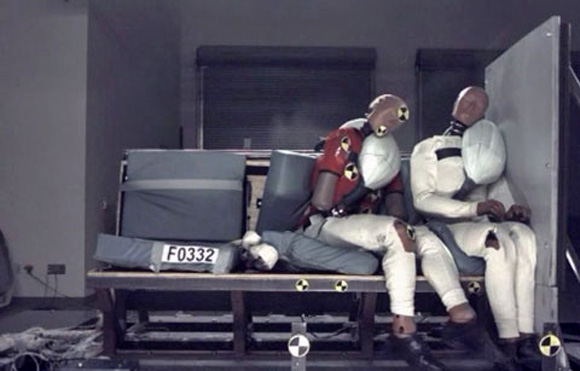
Due to Technokontrol continuous investment in TK-Aviation safety R&D programs we have seen that our development programs are being used as bench marks for other technical safety manufacturers and especially aviation manufacturers around the globe whom are trying their upmost in increasing all together the levels of security and safety in all means of aviation, aerospace and emergency sectors incluiding HSE, SSHE, ASS, etc.
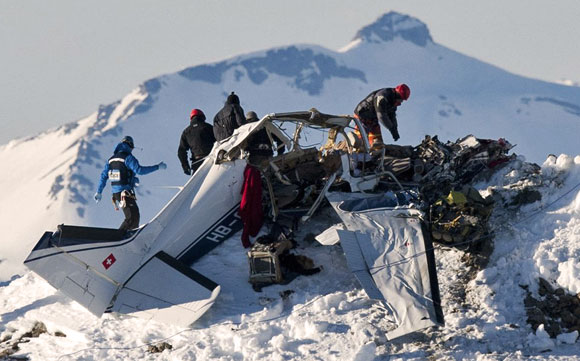
As seen we have been incorporated in an independent patent research program which Technokontrol has been designated and mentioned on pages p.16, p.19, p.24, p.25 and p.26 as being at the forefront with these other global fabricators.
Click on images to enlarge
Patent research pages
Not only is Technokontrol a corporate member of the Royal Aeronautical Society but we also to incorporating our specialist, unique, patented technologies as the non-explosive aircraft fuel tanks to the extreme high friction composite aircraft panels for emergency landings with wheels or operational undercarriage failure scenarios to the specialist bullet proof, light weight protection materials for high risk aerial operations in drone/human flown aircraft as used in the Alien and the Eagle Eye aircraft models.
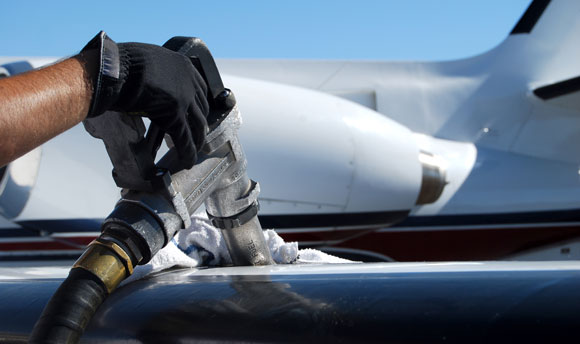
Our TK-airbag technology has also been incorporated into the unique TK-Emergency Life Pods Evacuation Systems in which not only having these "Emergency Life Pods" incorporated into their unique design but also being fully protected and also having our unique internal, external, personal, structural designed aviation emergency airbags which together with our emergency parachute deployment systems, anti-explosion fuel tanks, specialist resistant materials creating possibly one of the safest aviation, emergency evacuation systems in these industries.
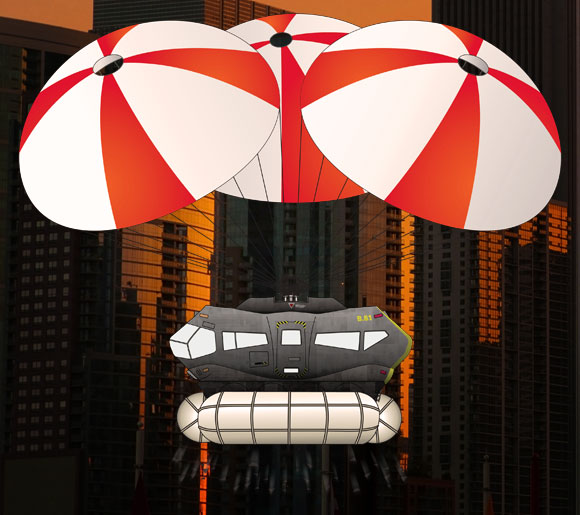
Technokontrol has been awarded the prestigious joint No. 1 position in Spain as the Number One Technology Patent Corporation for 2013

During the present year 2015 Technokontrol will have broken all the historic records due to having been presented and approved over 100 patents which are at present being processed.
Click on images to enlarge
Technokontrol is one of the most varied of technology patents corporations in Europe, continuously patenting new, unique and exclusive technologies, systems and applications from energy related patents to environmental, security, construction, safety, efficiency, aviation, military technologies which most of them can be viewed on the Technokontrol web site.
Complete documentation

TK-Fireproofing of structural steel & other materials in the construction industries

TK-Fireproofing of structural steel & other materials in the construction industries. During Technokontrol´s R&D with regards of our fire-flame-thermal proofing panels via the use of Technokontrol unique patented construction panels we discovered many different levels of testing of such materials by the top global manufacturers, civil engineer institutions and authorities and the lack an unified global testing standard and even how low testing times and thermal heat temperatures are required to be tested within these extreme physical and chemical exposures to obtain such product certifications and usability for their clients projects and markets.
In order for a fireproofing product to qualify for a certification listing of structural steel, through a fire test, the critical temperature is set by the national standard, which governs the test. In Japan, this is below 400°C. In China, Europe and North America, it is set at ca. 540°C.

We believe that thermal testing of these panels, designs, materials in the 400ºC-540ºC as extremely low as one can see in attached reports with regards of the 11-S WTC terrorist attack that the average temperature exposure during all of the attack were in the range of 500ºC-800ºC with a maximum estimated thermal peak of 1100ºC. As one will be able to read in the next sections the thermal heat required to melt steel into liquid form is in the range of 900ºC to 1200ºC.
Thus believing that even though the 11-S was an extreme example of structural damage with explosions, structural impact damage and force with the burning of more than 50,000 liters of burning jet fuel and its disbursement on many floors, internal fuel as furniture, tangible office and consumable materials, plastics, cabling, vents, textiles this can or may occur again and this experience should be made as the standard of testing globally as the World is getter even more dangerous and less safer than during 2011.
WORLD TRADE CENTRE 11-S PERFORMANCE FIRE-EXPLOSION REPORT
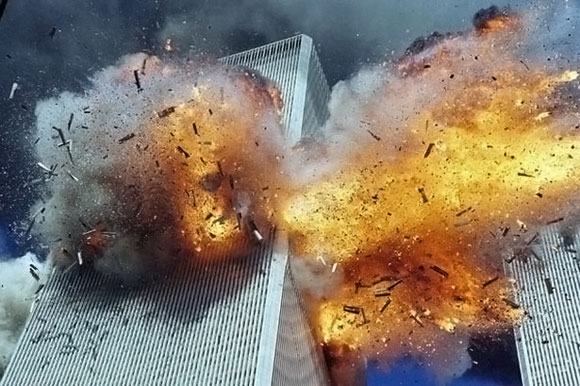
- FEMA WTC 1 and WTC 2 (PDF)
"Damage caused by the aircraft impacts is believed to have disrupted the sprinkler & fire standby systems, preventing effective operation of either....use of small hose streams ineffective."
"Had some other.... The thickness & quality of the fire-proofing materials would have been key factors."
Even stating clearly this paramount point with regards of temperature/thermal testing we mustn´t forget the time testing evaluations as also being extremely important because again the simple test of a 30 minute fire proof time resistance isn´t sufficient and even though the new construction codes state that new buildings must have materials which can protect the buildings, apartments, offices for at least 120 minutes and reaching to a maximum of 180 minutes for public use buildings. These tests are extremely weak as its not the same 180 minutes at 1100ºC than 180 minutes at 400ºC which again makes it extremely clear that in the event of a serious accident or terrorist attack such protection would be at least to say extremely weak.

All top global manufactures to whom we have done our technical due diligence use the solution of annexing a simple 30 minute fire resistant panel to a secondary panel, then to a third and so on to reach an unified panel mass of 6 required attached panels to reach a 180 minute fire resistant panel of 400ºC-500ºC maximum.
This meaning that the width and weight of the annexed panels being considerable on the total building structure, wall panels, ceiling panels and without forgetting that the higher the wall panel width, the higher the loss of valuable net floor space. A normal 30 minute fire resistant panel ranging the 8mm to 12mm width thus a 180 minute panel mass of 6 annexed panel reaching easily 42mm to 72mm.

Technokontrol´s construction fire/thermal wall-ceiling panels have overcome and surpassed many extreme testing evaluations and we can average testing with a 240-480 minute panel o the 1000ºC to 1200ºC thermal range, thus meaning that with the use of TK´s unique and patented panels being more than viable to protect steel and all types of structures with a 100% thermal/heat/flame higher performance in comparison to our top global competitors and again with a 100% higher performance in test timing against the established maximum of 180 minutes issued by certification authorities and reaching again another 100% increase with regards of the highest comparison of the 240 minute panel made by our direct competitors which is established by them to reach a maximum of 240 minutes.
After performing at least with a 100% superior product & performance qualities in all fields the “cherry on the cake” being than these extreme performance levels can be reached with a panel consisting of a maximum panel width of 12-16mm which is at least to state a 400% higher performance and a massive reduction in weight and width which saves thousands of meters of gross wall and ceiling space per project.

This allows the constructor to offer the maximum protection and safety to their clients and at the same time having at least the same net floor space using the competitors 30 minute panel and in the event of having to install a 180 minute panel saving at least 30mm-40mm of floor space around and internally in all of the building in comparison and if one estimates a floor retail sale cost of 6,000-20,000 USD per meters in the most expensive projects in the World meaning millions in savings to the constructor and increasing net sales profit income as the floor space remains the same in the worst case scenario or with massive floor space savings in the best depending on each ones building regulations and standards.
TK wall,floor and ceiling fire protection paneles surpass with over 100%-200% all NFPA 286 Standards.(National Fire protection Association).
NFPA 286: STANDARD METHODS OF FIRE TESTS FOR EVALUATING CONTRIBUTION OF WALL AND CEILING INTERIOR FINISH TO ROOM FIRE GROWTH
TECHNOKONTROL PROTECTING AGAINST ELECTROMAGNETIC PULSES-WAVES.
Technokontrol has also patented and designed the new evolution EMPS protection panel which not only will perform as a thermal, fire, heat protection panel but also reduce, block, nullify electromagnetic pulses, waves either from solar flares and pulses, military use of EMPS warfare weapons already available to the top 5 military nations in the World and being prepared to be used instead of nuclear and/or atomic weapons as the devastation would be to make a XXI century nation, region, continent to go back in time technologically to the Roman Empire era in a matter of seconds without any human or living species injuries, deaths, illnesses which would cause the downfall of any government, state, group.

We can also protect homes, buildings against magnetic, radiation, electromagnetic fields being the cause of more and more people becoming ill and even becoming allergic to these types of waves, pulses at atmospheric levels.
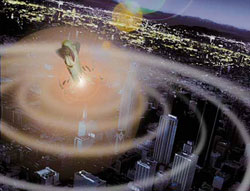
Recently it has been discovered that several top global criminal organizations have invested several hundred million Euros in massive R&D plans to create hand held or vehicle transported EMPS weapons to be used in criminal activities as destroying all electronic technologies in a town, boroughs, city thus being able to carry out all their criminal activities, destruction without any risk and /or even blackmailing the local, regional or national authorities as these types of attacks would destroy all electronics, technologies at street, commercial, industrial, civilian, strategic infrastructure levels as stopping all law enforcement, medical, supply services for months or even years.
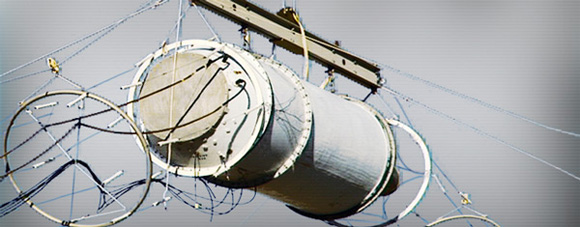
EMP Device
This type of an attack on the US continent would have an overall financial and economic burden on the USA nation of aprox 3 Trillon USD and even worse over 20 years in returning to pre-attack levels.
THE FUTURE IN HIGH RISE BUILDNGS PROTECTION AGAINST FIRE, TERRORIST AND NATURAL DISASTERS.
SKY SCRAPPER/HIGH ALTITUDE BUILDINGS EVACUATION TECHNOLOGIES
TK-EMERGENCY LIFE POD EVACUATION STATION (E.L.P.E.S).
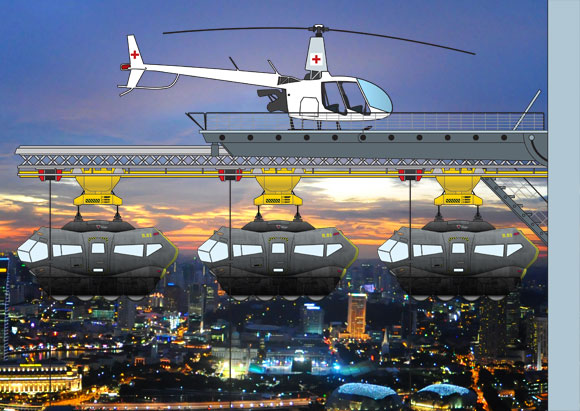
Technokontrol and its R&D team are in continuous evolving safety, security programs, technologies and systems to which we try to create our vision of worst case scenarios and to find viable, efficient , pragmatic systems and technologies. We at Technokontrol have designed, patented our unique safety technology and security systems to protect and to act in a preventative manner and to “attack head on” worst case scenarios at medium, high altitude buildings.
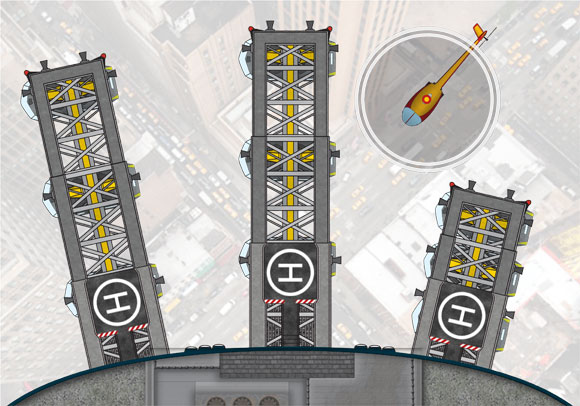
What has Technokontrol R&D designed, patented, manufactured to resolve these Security, HSE & Safety issues? Our technology which we have named as “EMERGENCY LIFE POD EVACUATION STATIONS” are located inside these buildings as in a hanger capacity in which with an automated or manually operated emergency system these “Stations” are activated as "pre-holding areas” for all personnel, then as “waiting areas."
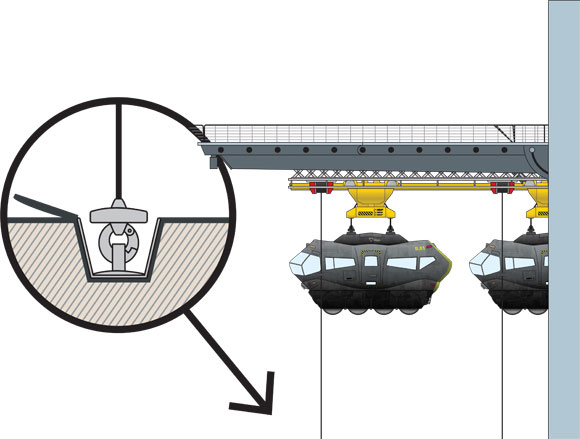
Then these designated “Emergency Pods” are ready for their deployment and emergency evacuation of all the possible people on a continuous way as these “Pods” are used as in a lift system, unloading personnel, persons, assets, once reaching the ground of Emergency/Designated landing zone (ELZ)/(DLZ) are then unloaded and re-loaded with security, safety, medical personnel and in having access into the evacuation, accident, damages, attacked building areas without depending on the entrance of these specialist personnel via the “Building core” as in all normally designed medium-high altitude buildings.

ELPES emergency landing systems - Emergency air bag
Please find further information regarding these new safety technologies:
TECHNICAL DATA WITH REFERENCE OF TESTING STANDARDS.
In order for a fireproofing product to qualify for a certification listing of structural steel, through a fire test, the critical temperature is set by the national standard, which governs the test. In Japan, this is below 400°C. In China, Europe and North America, it is set at ca. 540°C. The time it takes for the steel element that is being tested to reach the temperature set by the national standard determines the duration of the fire-resistance rating.
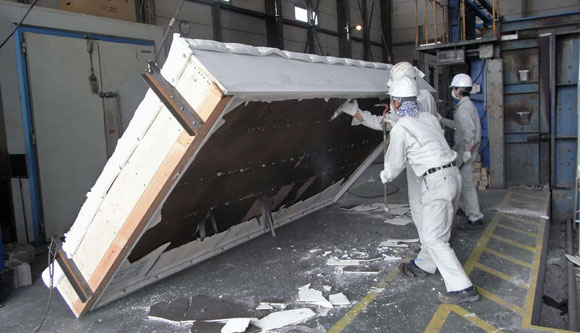
In the event of using fire protection foams, plastering materials extreme levels of care during spraying must be taken to ensure that thermal expansion of structural elements do not damage fire-resistance rated walls and floor assemblies. Penetrants in firewalls and ferrouscable trays should be installed in accordance with an appropriate certification listing that complies with the local building code.
Open Web Steel Joists (OWSJ) require a great deal of spray fireproofing because they are not very large, have many inlets, nooks, curves, hidden corners and also because they are so open that when these are sprayed with these fire proofing plasters-foams these in many cases are disbursed in all directions including right past the focal point which creates installation vacuums, incorrect spraying ranges, different levels of spraying levels thus having higher and /or lower levels of protection as being done by hand and normally visually.

This variable spraying process isn´t secure to say the least as it doesn´t allow a secure validated method of correct uniform installation of the entire installation process especially when air gaps, nook, holes can be covered with initial foam coating creating invisible air cavities and thus rendering inefficient the whole process of spraying and of fire proofing.
Structural steel requires external insulation (fireproofing) in order to prevent the steel from weakening in the event of a fire. When heated, steel expands and softens, eventually losing its structural integrity. Given enough energy, it can also melt. Heat transfer to the steel can be slowed by the use of fireproofing materials. While concrete structures that comprise buildings are able to achieve fire-resistance ratings without additional fireproofing, concrete can be subject to severe spalling, particularly if it has an elevated moisture content.
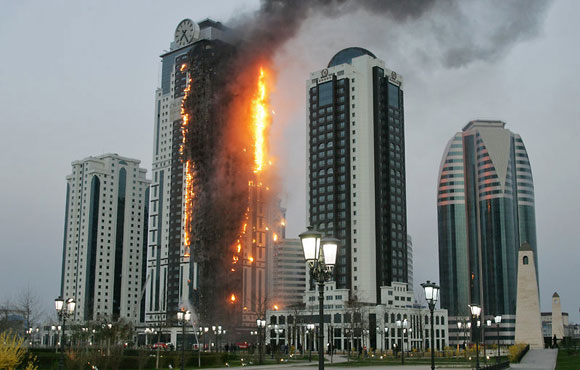
Fireproofing is available for concrete but this is typically not used in buildings. Instead, it is used in traffic tunnels and locations where a hydrocarbon fire is likely to break out. Thus, steel and concrete compete against one another not only on the basis of the price per unit of mass but also on the basis of the pricing for the fireproofing that must be added in order to satisfy the passive fire protection requirements that are mandated through building codes.
Thermal Technical Properties
The properties of steel vary widely, depending on its alloying elements. The austenizing temperature, the temperature where a steel transforms to an austenite crystal structure, for steel starts at 900°C for pure iron, then, as more carbon is added, the temperature falls to a minimum 724°C for eutectic steel (steel with only .83% by weight of carbon in it). As 2.1% carbon (by mass) is approached, the austenizing temperature climbs back up, to 1130°C. Similarly, the melting point of steel changes based on the alloy.
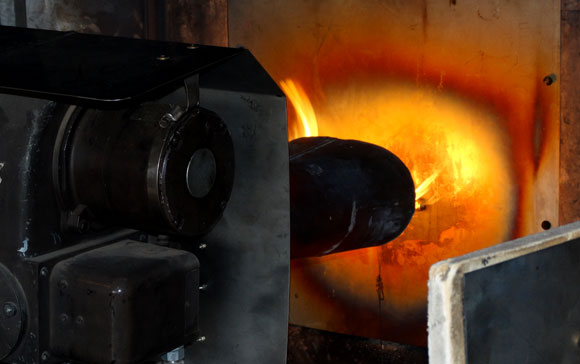
The lowest temperature at which a plain carbon steel can begin to melt, its solidus, is 1130 °C. Steel never turns into a liquid below this temperature. Pure Iron ('Steel' with 0% Carbon) starts to melt at 1492 °C (2720 °F), and is completely liquid upon reaching 1539 °C (2802 °F). Steel with 2.1% Carbon by weight begins melting at 1130 °C (2066 °F), and is completely molten upon reaching 1315 °C (2400 °F). 'Steel' with more than 2.1% Carbon is no longer Steel, but is known as Cast iron.

TK wall,floor and ceiling fire protection paneles surpass with over 100%-200% all NFPA 286 Standards.(National Fire protection Association).
NFPA 286: STANDARD METHODS OF FIRE TESTS FOR EVALUATING CONTRIBUTION OF WALL AND CEILING INTERIOR FINISH TO ROOM FIRE GROWTH
Bad Summer for stating that pipelines, fuel storage tanks, electric fuel powered power plants, sewage infrastructures, gas cylinders, "Never Explode!"
An extremely bad Summer for anyone stating that pipelines, fuel storage tanks, electric fuel powered power plants, sewage infrastructures, gas cylinders, "Never Explode!"

These several past weeks have been more than an eye opener to all of those people whom state with little or no knowledge that gas, fuel, petrol chemical, sewage infrastructures, road tankers, gas cylinders never explode.
Around the planet these past weeks we have all seen the intensity, exponential increase of human related incidents, operational accidents, terrorists attacks to which we can very sadly state will only continue to increase especially when our national infrastructures, crime and terrorist risk, wars, civil unrest only worsens by the day.
Every incident is a learning step and an eye opener for many of those people whom believe that the downfall of modern day society is their route to reach their own personal goals and the use of daily supply assets is becoming an extremely easy way to reach their objectives and even using them with a hidden agenda as one cannot relate to whom an “accidental incident” can be really related to.

Anyone with any political, religious, economical , environmental, social, corporate agendas can study, prepare, implement with very little funds and knowledge the use of this basic destructive acts and can cause any major disasters without the use of explosives, arms and even worse without being tracked by the law enforcement and secret services of any nation especially dormant terrorist cells. Who can stop the purchase of a simple gas cylinder?
Anyone with malice or ignorance can make this simple domestic gas cylinder become a 200 kilo TNT explosive without anything other than the use of a simple starting fuel to ignite a fire as a fuel jerry can with several liters of gasoline? Why aren´t the authorities not preparing for the worse even though having more data than ever with regards of terrorist attacks and their possible destructive strategies?

It’s very obvious that with the right safety integrated technologies and designed gas cylinders this wouldn´t be possible but there are always people stating that the use of gas cylinders as I.E.D. explosives in the developed World would be impossible but when one can see in any media network how these simple gas cylinders are being used as short-medium range mortars in the Middle East and also being used as an I.E.D.explosives in trolley waste bins one should begin to worry that as everything in our modern day society one being especially information has no boundaries and even less when they use this information to learn how to kill, injure, destroy our societies if not totally physically but continuously with the continuous media and internet bombarding using the warfare psychologically of fear and risk in the western World.
The Canadian Government has received from various environmental platforms a parliament request to stop all transport by rail freight of chemicals, fuels, gas related and explosive materials via the Canadian rail networks. Canada has seen a massive increase in rail freight through their rail networks and also have suffered with extremely high rail accidents which have reached over 100 deaths, hundreds of injured persons, distraught families and hundreds of millions of dollars of costs during the last 12 months. The increase of rail freight incidents has reached over 4,000%(Four thousand per cent) and after undergoing a very serious study of this exponential increase of incidents the bases has been found mainly in the use of old 1970´s rail networks, with no upgrading or modernization to withstand the ever increasing rail freight traffic especially with dangerous, flammable, explosive products, the use of again 1970´s unprotected, outdated rail tanker cars and even worse without any real safety technology installed to withstand a derailment, natural disasters, operational incident or similar.

During the last years more and more rail incidents, accidents have been finally found to have a political, economical, religious, criminal back grounds but have been stated and classified as being accidents to not increase the social, media awareness and worries of the increase of these means of transport incidents. However, when reports form modern, developed nations thus believing that these incidents reports are non bias having found traces of C-4 explosives, grenades, homemade explosives, unscrewing-damage, vandalism of tracks , etc.
Where could any terrorists, criminal find the option and opportunity of having 12-15 million liters of high explosives, flammable liquids, free massive global media projection for the simple expense of unscrewing, damaging, vandalizing, explosive planting of a 100-120 rail car freight train in the developed World and especially in built up areas, towns and cities? The answer can´t to be to say that all rail networks have detection systems, sensors, 100% network security coverage but this isn´t so and no one can stop someone running up, braking a fence or even worse using themselves as a suicide bomb or internal secret cell employees who can do anything once in control of the asset as being part of their employment.

Again, why aren´t we preparing for the worst? If not for one’s own personal reasons or political, corporate agendas as being the possible cost, expense, investment in these safety and security technologies but at least for one’s own personal , social, environmental or corporate agendas as saving lives, protecting the environment, HSE of one’s employees, protecting national strategic infrastructures which are an obligation stated by parliament of the State, Government and not being “selective or cost cutting” as national security including economic national security always being paramount.
Without also taking into account the extreme cost increase in insurance premiums, liability costs, punitive legal damages, rail network repairs and even worse the cancellation and prohibition of rail freight transports of dangerous materials with the final cost being applied to the consumer as other routes and installations as new pipelines, road tankers would have to intake these closing of rail networks.

Presently the most efficient, effective and low cost method of transportation being rail freight and even more so as also being the most unregulated, nearly free from bureaucratic ties which at present benefits the whole petrol chemical industry thus at least if the Administration cannot withstand such investments at least some of the financial burden of the modernization, safety and security increase should be shared by the operators, clients via the purchase, use, lease of new protected and safety rail freight cars even if only used by these corporations which can be written, deducted via tax liabilities if all parties are interested in finding a real solution.
That´s why Technokontrol safety and security technologies aren´t a luxury but a must for any Administration, corporation, society, because no other present and foreseeable technologies can reduce, avoid , cancel and even less impede all of these types of risks and dangers in such a simple, effective and efficient manner thus shortly one will be able to see the full use globally of these safety technologies as being the only real and pragmatic solution in all ways of our daily lives from construction to industrial production, security to safety sectors, aviation to transportation…..
RAIL INCIDENTS

- 2013 via Rail Canada terrorism plot
- Major vulnerabilities to railway security
- With security eyes focused on airlines, terrorists look to rail
- Video of freight train hits fuel tanker
- Video of train explosion
- Video of massive explosion as us train derails
GAS CYLINDER INCIDENTS

- India: Bihar bans use of small gas cylinders after temple attack
- Police avert car bomb 'carnage'
- FARCS's homemade mortars with gas cylinders
- Video of Syrian rebels using as cylinder mortars
- Video of terrorists protesters blowing up a gas cylinder in the center of Manama in Bahrain
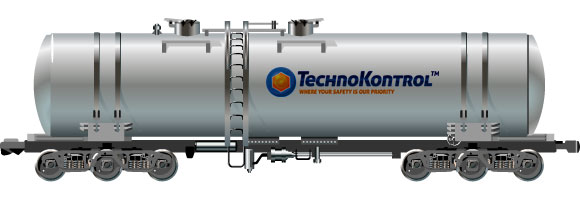
TK Technologies Approved by IRTA & FIM
IRTA & FIM APPROVE TECHNOKONTROL SAFETY TECHNOLOGIES
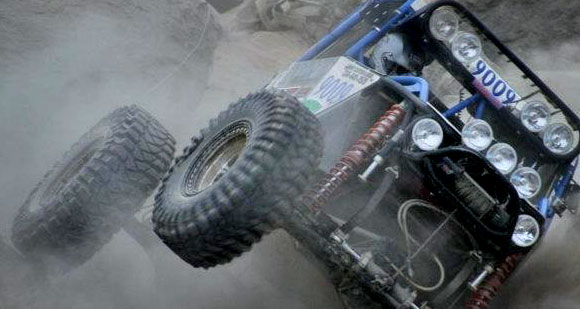
News Update: IRTA (International Road Racing Teams Association) & the International Motorbike Federation (FIM) have confirmed the approval of TechnoKontrol Safety Technologies.
IRTA (International Road Racing Association) & FIM (International Motorbike Federation) have approved the use of Technokontrol Safety alloys in all motorbike formulas under their supervision.
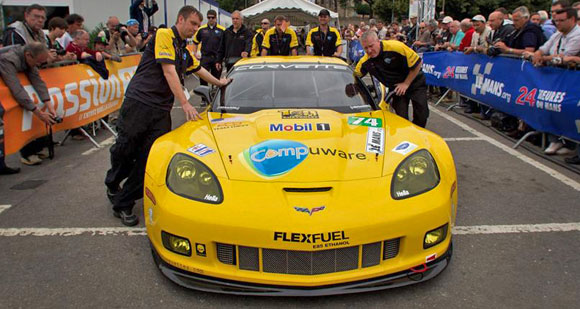
As stated in the F.I.M. regulations such World Federation requires from the regulation side that all Fuel tanks that are not lined with a fuel cell bladder must be filled with an anti-explosion/fire retardant material. It is the teams responsibility to follow these regulations and if requested provide us with the necessary information to confirm this.
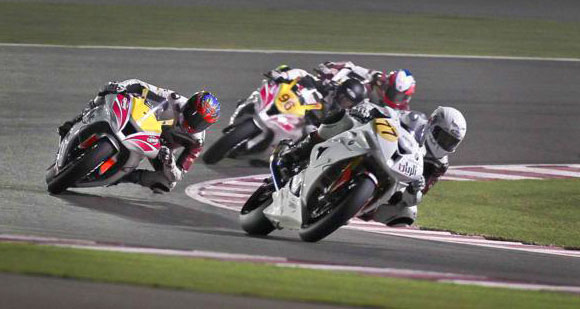
Thus Technokontrol entering also into the world of motor sports safety & security and also awaiting the final approval for more auto-sports championships and especially the Formula One Championship which are also undergoing final testing and technical due diligences.
Engineering Update
TECHNOKONTROL ENGINEERING TEAM UPDATE

IN THIS ISSUE
Engineering Update: Fuel Safety Testing
On the 12th March 2015 the Technokontrol Engineering Team has been holding safety, security and also fuel testing including fuel vaporization savings, sloshing liquid testing and many more technological tests in this highly technological based sector which are being tested for the introduction in the the World Motorbike Championship. These tests have been held at the Spanish F.I.M. Race course of Jerez, Spain. At the same time similar testing programs are being held for the Formula One World Racing around the World.
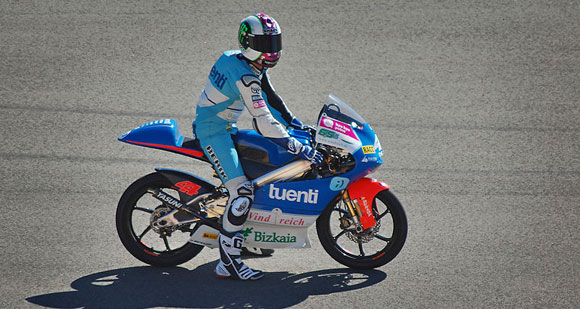
The greatest advantange has been discovering for its main usage in the Motor Sport sector is that the Technokontrol Alloys not only being safer and with longer durability than the normally used "foam" option but also having the extra benefit of being easily inserted/emptied in seconds/minutes into any fuel tanks in its "TK-Alloy ball format" and with the great advantage of not retaining "absorbing" any fuel capacity in its alloy formulations as these are metal 100% based which in comparison with the "foam" used has a fuel saving capacity of 4%-6% per fuel tank of fuel as "foam" being as a "sponge based" which absorbs the fuel and thus needing more fuel to take into account this loss of fuel capacity, thus more weight, less speed due to extra weight.

The fuel temperature has also been tested and confirming that using the “TK-Alloys” for these types of motorsport usage with high impact levels as "liquid sloshing" in the fuel tanks the temperature of the fuel stored remains lower thus having less vaporization, lower ignition points and with the even better less volatile chemicals being evaporated thus having and maintaining a higher quality fuel inside the fuel tank and with lower temperatures thus avoiding in having to "cool or freeze" the fuel tanks or fuels in each usage at test or racing levels.
Aircraft Update
TECHNOKONTROL AIRCRAFT UPDATE
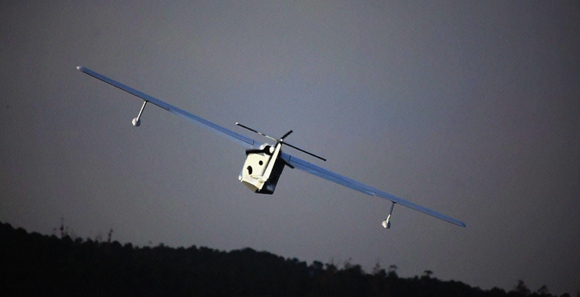
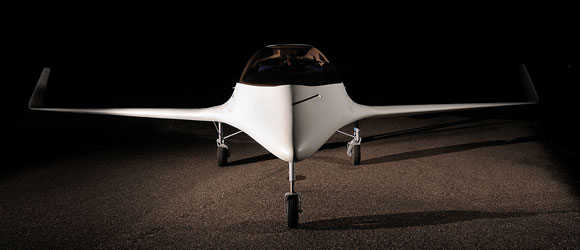
IN THIS ISSUE
Engineering Update: Data Releases
Production Update: Supply Chain
Engineering Update: Data Releases
TK's engineering team has continued to work with high intensity during the fourth quarter of 2014 as the company prepares to begin assembly of the first of the ALIEN BLACK NIGHT VIPER production aircraft with its new Airbag, parachute, Angle of Attack Airbag Deployment Patented Technologies.
This has resulted in the creation of hundreds of drawings each week by the engineering team since October. There are over 1,400 unique parts in the ALIEN BLACK NIGHT VIPER AIRCRAFT, and for each of these, TK engineers must identify critical attributes such as geometry, location, material, fabrication processes, as well as stress and performance calculations. All of this information must be specified before the part can be released for manufacturing and testing which is and always will be done by TK Aviation for all types of RISK and CLIMATOLOGICAL scenarios.

TK design and manufacturing engineers closely collaborate as the company gears up for production. The result of this collaboration is hundreds of drawings, like the one shown above for the ALIEN's wheel-centering bracket for the nose gear.
TK's engineers must also design the manufacturing tools that will be used for every custom part of the aircraft. Some of the ALIENS's components are off the shelf, such as fasteners, and others are specifically designed for the ALIEN, such as lighting.
In total, there are over 500 parts for which TK is designing laminate tooling that must be released, in addition to the parts for the aircraft itself, and 260 of them have been released to our manufacturers. With over 900 of the unique part designs already released, TK is on schedule to begin the assembly of the first production DIESEL POWERED, 120 BHP prototype aircraft engine and aircraft testing, ALIEN DS004 (Engineering Serial Number DS004) in January 2014.

Pictured clockwise from left is the metallic laminate tool process, from rough tool to finished tool and then finished part from our supplier, Flying parts, which will be used to create the Alien's elevator skins.
Production Update: SupplyChain
As TK's engineers work to release the definition of the aircraft parts, TK's operations team is simultaneously ensuring that those parts are built on schedule and to TK's exacting standards, EASA safety procedures and regulations. In all, TK expects to work with over 15 unique suppliers to build the ALIEN, and almost 100% of those suppliers have already been identified, thus most in home and associated company’s in other TK Technology markets.
The production team divides the aircraft parts into two categories: commercial off-the-shelf parts (COTS) and unique TK ALIEN design parts (Non-COTS). COTS are items that are not made to a TK AVIATION-unique specification, such as fasteners and the AUDI DIESEL power plant. Due to their unique design, Non-COTS parts of the ALIEN tend to require longer lead times, and all long-lead procurement components (over 15 weeks) are well underway.
In terms of both cost and physical dimensions, the largest component of the aircraft is its composite airframe, which TK Aircraft is manufacturing at Madrid facility alongside the EAGLE EYE and JET ALIEN ENGINE POWER PLANT test-production lines.
The complex manufacturing process begins with a master design that TK releases to a manufacturer who then mills a "positive" from a large block of epoxy tooling board. TK AVIATION then uses the mold made from that master to laminate the composite airframe components, which are, in turn, delivered to TK for aircraft assembly. For large components, the mold is made of carbon fiber (using the epoxy tooling board master), while smaller airframe components employ metallic tools, which are CNC-machined from solid aluminum or steel billets.
DRONE (Unmanned)/ Technology has been already incorporated in to the ALIENS and EAGLE EYES software aviation - flight programs thus allowing the present ALIENS and EAGLE EYES to fly as normal aircraft/amphibious with 4 different fuel power plants, petrol 95, diesel, jet fuel J4/J5 and the new electromagnetic-electric power plant with 120 bhp and a new record breaking low weight power plant of under 20kg ready for 2014 engine testing program.

Last month TK technicians laid up the carbon fiber mold for the right upper wing skin using a milled epoxy board master (the light blue block beneath the carbon mold that is under construction). Once this carbon mold is complete, TK will use it to laminate wing skins for the prototype and production for ALIENS AIRCRAFT.
At this time, the masters for the horizontal tail, wings, fuselage halves, and Water platforms are complete and have been delivered to TK. Using these masters, TK has already made the carbon fiber tools for the horizontal tail, wings, and fuselage halves and has begun preparation for lay-up of the production aircraft components.
The TK team is on schedule to receive the first parts for DS004, the elevator skins, in Madrid next month. These deliveries will mark the beginning of the assembly of the first production Diesel Powered Alien Aircraft. Between now and the end of April 2014, TK will receive over 1,000 parts at the company's assembly facility, which now has its operational inventory and warehousing system in place.

At TK facility, technicians use the completed Alien fuselage master to manufacture the molds that will be used to make the fuselage skin of the Alien and Eagle Eye versions.
TK is pleased to announce the appointment of two new Directors of Flight Training. Bringing a wealth of aviation experience to his new role, joining TK AVIATION after a distinguished career in the Spanish and UK Airforces.
Both having surpassed over 5,000 flight hours in 25 different aircraft, 100 carrier landings as an F/A-18, Tornadoes, Harrier Jump Jets and more than 130 combat missions in Iraq and Afghanistan. They have led training squadrons in Europe and under NATO training, with more than 30 instructors under their command during his role as Directors of Operations for training at their corresponding bases and airforces.

Documentation & Certifications
TechnoKontrol Wikipedia

TechnoKontrol: 1st in Spain for own Technology patents 2013 & 2014

- Ministerio de Industria Turismo y Comercio-OEPM
Technokontrol, the number 1 corporation in Spain filing for its own technology patents, trademarks and utility patents (SPA) - OEPM 2013 The year in numbers (SPA)
TechnoKontrol has been fully verified and certified by Bureau Veritas
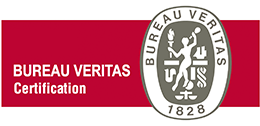
Certificates
- ISO 9001 - ES108784-1
- ISO 14001 - ES108782-1
- ISO 45001 - ES108783-1
- ISO 4126
- ISO 28000
- ISO 37000
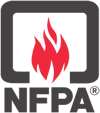
NFPA-National Fire Protection Association
NFPA-Asociación Nacional de Protección contra el fuego
TechnoKontrol is a member of the NFPA
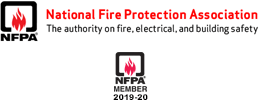
NFPA 69: Standard on Explosion Prevention Systems, 2016 Edition
Prevent deflagration explosions due to combustible dust particles, gases or vapors with NFPA 69. Combustible dust, gases and vapors produced in industrial settings can pose a significant safety hazard.NFPA 69: Standard on Explosion Prevention Systems offers definitive guidance on explosion protection and prevention systems.
ATEX - European Antiexplosive Safety Directives

- ATEX Guide: Protection in explosive atmospheres
- ATEX-EU/HAZLOZ-USA/NFPA-USA/DSEAR-UK/Explosion Directives TechnoKontrol Additional Anti-Explosion Data
- ATEX Directive in EU Directives
Dangerous Substances and Explosive Atmospheres Regulations - United Kingdom/ATEX

United Nations Economic Commission for Europe - UNECE - TechnoKontrol

- TechnoKontrol information for the UNECE BLEVE working group
Proposal transmitted by the governments of Spain and France
The European Parliament and The Council

Technokontrol's Products & Services are insured by

TK-Global Engineering - Where efficiency and reliability become a reality


More info
Should you want to receive more information, please contact us.
